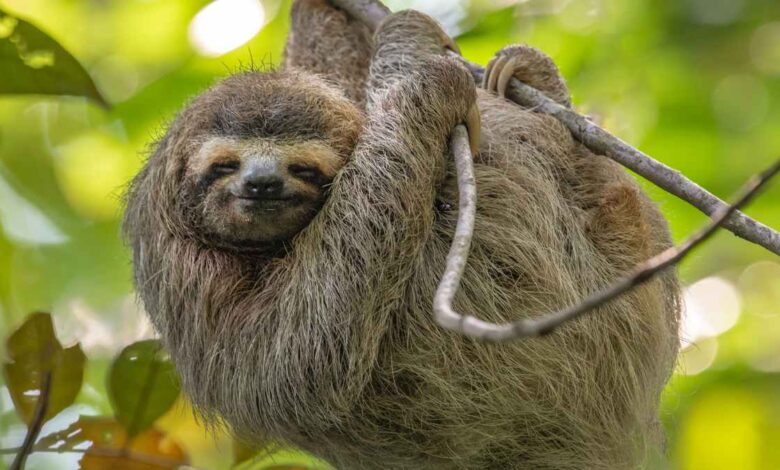Sloths: The Slowest and Sleepiest Animals in the World

Sloths are one of the most fascinating animals in the world. They are known for their slow movements, their love of sleep, and their long claws. They are found in the tropical rainforests of Central and South America.
Table of Contents
If you’re intrigued by creatures that move at their own pace and live life in the slow lane, then sloths are undoubtedly your kindred spirits.
Scientific Name
Sloths belong to the scientific order Folivora, a name that perfectly encapsulates their primary diet of leaves. These fascinating creatures are renowned for their unhurried movements and unique adaptations that enable them to thrive in their tree-dwelling habitats.
Types of Sloths
Sloths are broadly classified into two main types: two-toed sloths and three-toed sloths. Despite the difference in the number of toes, both types share the characteristic slow-motion lifestyle that defines their existence.
Evolution
Sloths trace their lineage back to the ancient landscapes of South America. Over millions of years, they have evolved to become the masters of energy conservation, developing specialized features that allow them to expend minimal energy while moving and foraging.
Behavior Traits
The leisurely lifestyle of sloths is a result of their slow metabolism and deliberate movements. Their unhurried approach serves as an effective camouflage against predators, as they blend seamlessly into the tree foliage, making them almost invisible.
Habitat and Home
Sloths are primarily found in the rainforests of Central and South America. They have adapted to arboreal life, spending the majority of their time hanging upside down from tree branches, thanks to their unique anatomical structure and strong claws.

Diet
As folivores, sloths have a highly specialized diet consisting mainly of leaves. To supplement their nutritionally sparse meals, they occasionally consume fruits and flowers. Their slow digestion process aids in breaking down the tough cellulose present in leaves.
Natural Predators and Threats
Despite their inconspicuous lifestyle, sloths face various threats from predators such as jaguars, harpy eagles, and large snakes. Habitat destruction due to deforestation poses a significant danger to their survival, as it disrupts their natural habitat and food sources.
Reproduction, Offspring, and Lifespan
Sloths exhibit a unique approach to reproduction, with mating often occurring high up in the trees. Female sloths give birth to a single offspring, which clings to its mother’s belly for several months before becoming more independent. Their lifespan varies, with captive sloths living up to 40 years, while those in the wild typically reach around 20 years.
Population Status and Conservation Efforts
Sloths, particularly the pygmy three-toed sloth, face the threat of habitat loss and human encroachment. Conservation organizations are actively working to protect their natural habitats and raise awareness about the importance of preserving these fascinating creatures.

Conclusion
Sloths are a remarkable testament to the wonders of evolution, showcasing how a slow and deliberate lifestyle can lead to survival and success in unique environments. Their enigmatic behaviors, specialized adaptations, and conservation challenges all contribute to making them a species worth cherishing and protecting.
FAQs
- Why are sloths so slow?
They have a slow metabolism to conserve energy and minimize their need for food. Their deliberate movements also help them avoid detection by predators.
- Do sloths ever come down to the ground?
They are primarily arboreal and feel most comfortable in trees. While they can come down to the ground, they are vulnerable to predators in this environment.
- Are sloths good climbers?
Absolutely! They are exceptional climbers due to their powerful claws and specialized limb structure.
- Do sloths make good pets?
No, they are wild animals and have specific habitat and dietary requirements that are nearly impossible to replicate in a domestic setting.
- Are sloths endangered?
Some species of sloths, such as the pygmy three-toed sloth, are considered critically endangered due to habitat loss and other threats.


